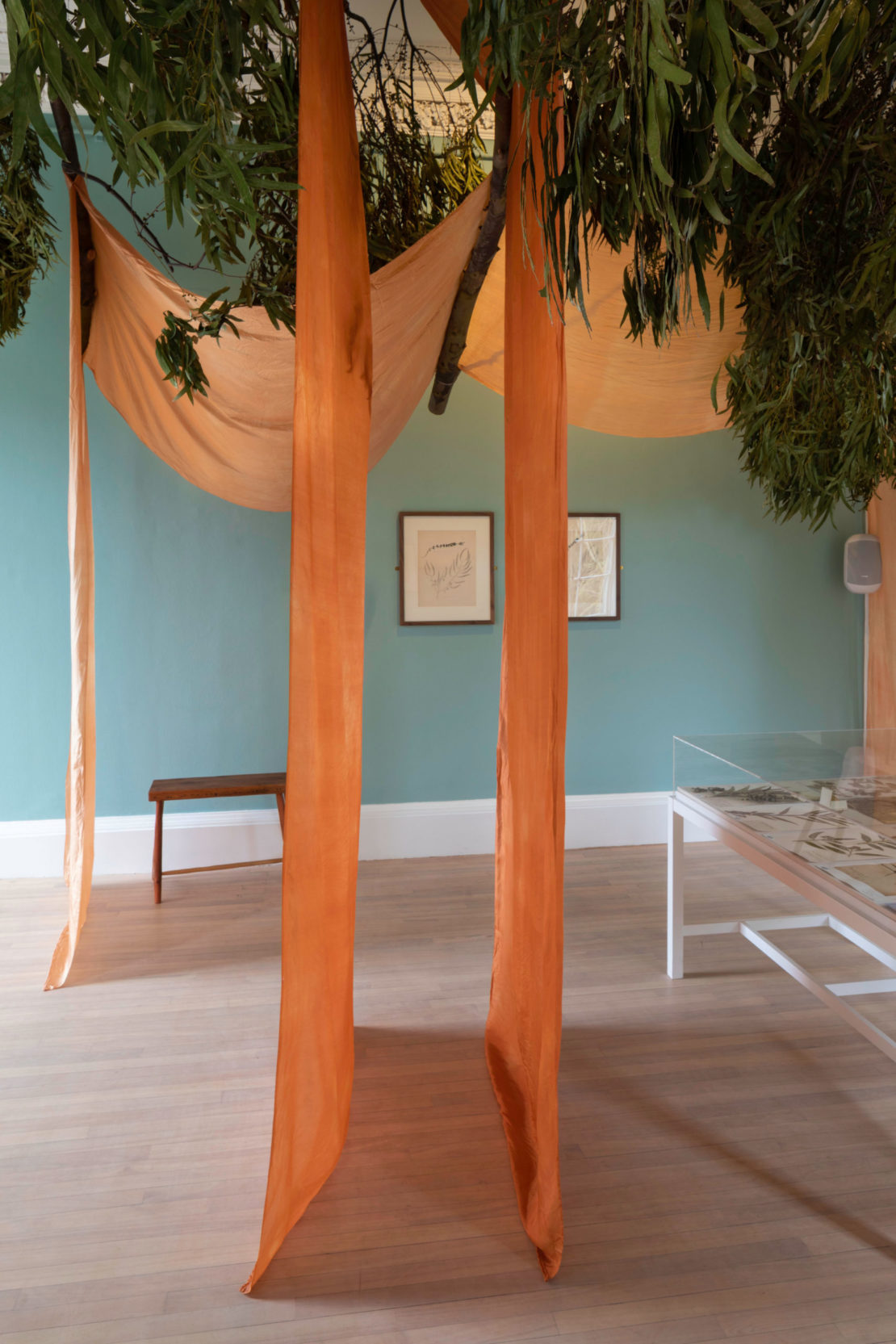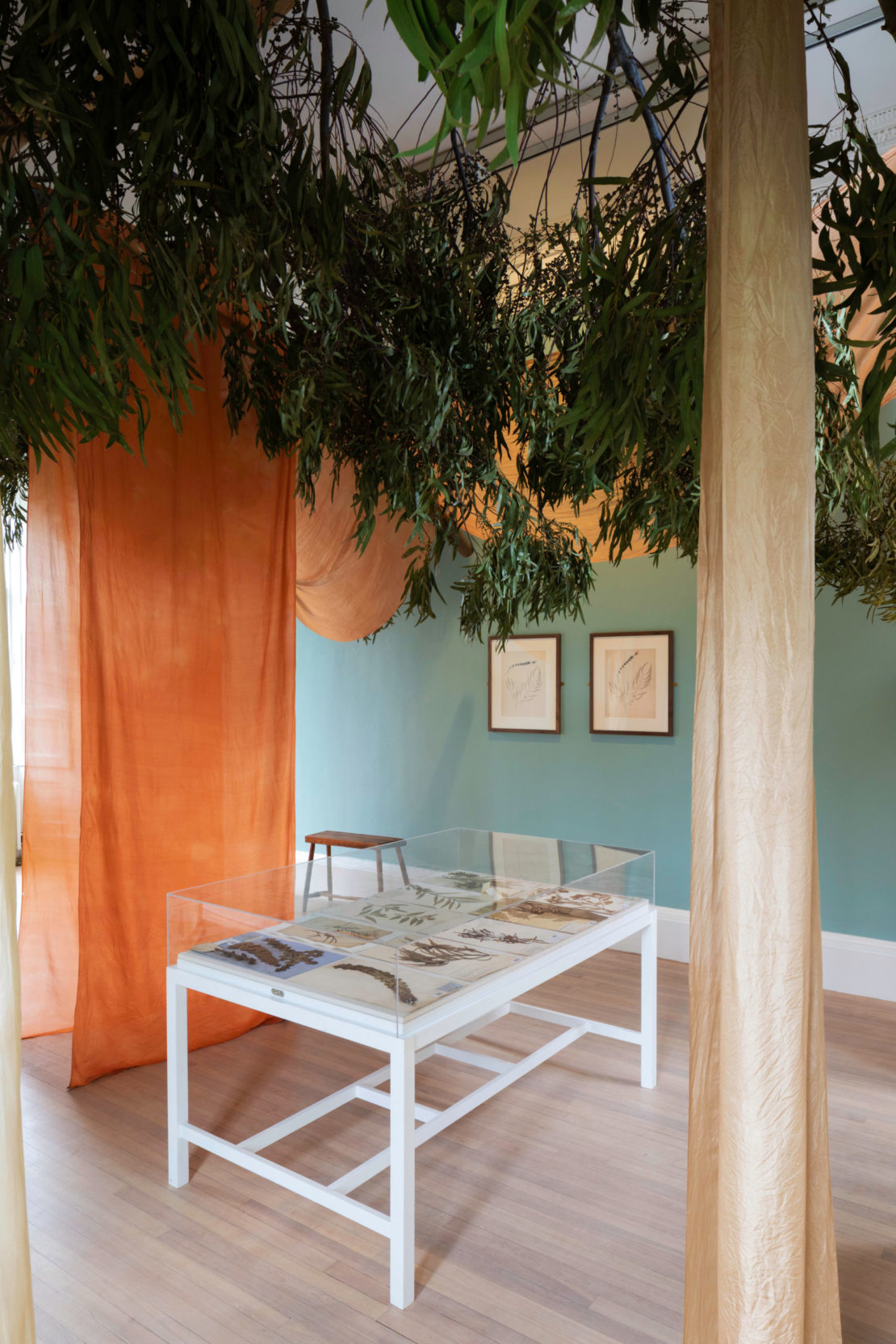Description
Blue Haze (2023) was developed as part of a multi-year research project exploring the movement of plants through Empire – culminating in the exhibition: Shipping Roots at Inverleith House, Royal Botanic Garden Edinburgh (March – August 2023)
Eucalyptus gunnii branches, eucalyptus-dyed silks, eucalyptus scent diffusers, hand-carved eucalyptus stools, sound installation made in collaboration with Madeleine Flynn and Tim Humphrey, botanical illustrations, herbarium specimens
Blue Haze follows the journey of eucalyptus, with over 750 species, away from its culturally significant context – the Aboriginal land it comes from. At the hands of the British, it was taken from Australia and promoted around the world for being the fastest and tallest growing hardwood. In India over 170 species were trialled beginning in the 1840s in the Nilgiri Hills and it quickly became the most common tree grown for timber plantations. The word Nilgiri comes from a mixture of Tamil and Sanskrit words: neelam meaning ‘blue’ and giri meaning ‘mountain’; originally named for the clustered bloom of the blue flowering species Strobilanthes kunthiana but now this area also radiates a blue haze from eucalyptus trees.
A blue haze is often seen around eucalyptus forests or plantations as the oil from the leaves combines with dust particles and water vapour which scatter short wavelength rays of light that are predominantly blue.
Eucalyptus has spread across the globe, now covering a land mass area of over 22 million hectares worldwide, leading to devastating impacts such as lowering water tables and increasing fire risk. This prompts us to ask the question: what happens when these trees are removed from the Aboriginal land they grow on and the Traditional Custodians who care for them?
Audio
Madeleine Flynn and Tim Humphrey featuring interviews by Keg de Souza with: Uncle Wes Marne (100 year-old Bigambul elder and storyteller), Anand Jadhav (Deputy Conservator of Forests, Government of Goa), Ashish Nerlekar, (Ecologist and researcher), Caroline Lehmann (Head of Tropical Diversity, Royal Botanic Garden Edinburgh), Greg Kenicer (Botanist, Royal Botanic Garden Edinburgh), Alan Elliott (Bioinformatician, Royal Botanic Garden Edinburgh) Bhaskar Adhikari (Botanist, Royal Botanic Garden Edinburgh)
Eucalyptus stools hand-carved by Lucien Alperstein
Hand-dyed silk made with Ruby Wake from the bark and leaves of various species of eucalyptus:
Ironbark (Eucalyptus sideroxylon)
Argyle apple, mealy stringbark or silver dollar tree (Eucalyptus cinera)
Spotted gum (Corumbria maculata)
Sydney red gum (Angophora costata)
Tasmanian blue gum (Eucalyptus globulus)
Shipping Roots is supported by the Outset Transformative Grant; the Australian Government and the British Council as part of the UK/Australia Season; the Australian Government through the Australia Council, its arts funding and advisory body; the NSW Government through Create NSW; and a City of Parramatta Council Community Grant.












